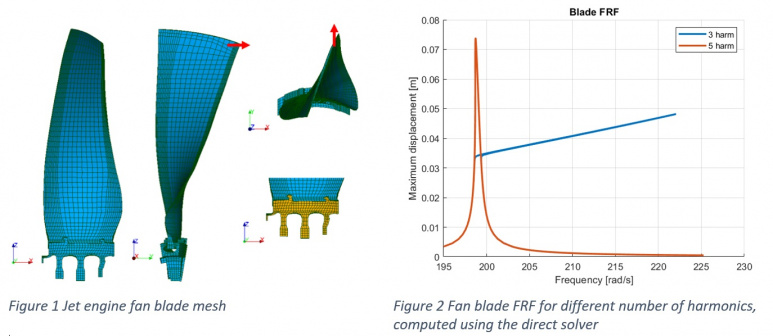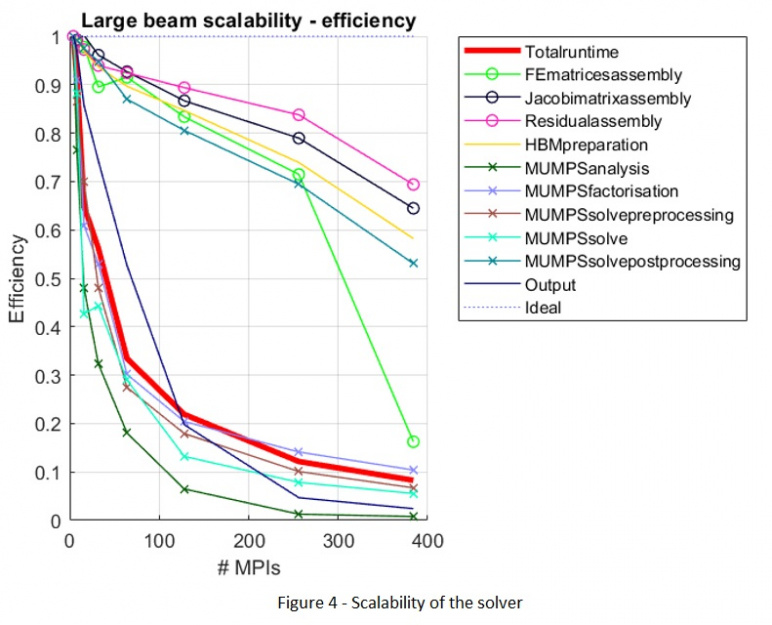ESR10 - Large scale nonlinear modelling and simulation of whole engine models
Recruiting Institution/Company: Imperial College (United Kingdom)
PhD awarded by: Imperial College (United Kingdom)
Controlling vibration in jet engine remains one of the biggest challenges in aircraft engine design and conception. The goal of this work is to provide a high-fidelity method to solve vibration problems. Harmonic balance method (HBM) is applied to a full-size problem. In order to be computationally efficient and capable of solving large systems, parallel computational techniques are employed.
HBM is a well-established tool for vibration analysis. Assuming steady harmonic motion, we can solve the equations of motion in frequency domain without implicit involvement of time. Combined with alternating frequency time procedure for evaluation of nonlinearities and continuation algorithm for tracking a curve over a range of parameters we can obtain a frequency response function (FRF) of a structure for a range of frequencies.

If we look into the core of computing the FRF curve, there is a linear system of equations that needs to be repeatedly solved. For high fidelity models this system is very large, it can easily exceed millions of variables. Such systems cannot be solved on regular personal computers. Dedicated computer clusters (supercomputers) containing hundreds of computational cores are required. Algorithms required for solving systems this large also need to be specially tailored for the cluster hardware.
During this project, we developed a code capable of solving large vibration analysis problem. HBM is used as the underlying mathematical model and parallel algorithms suitable for supercomputers are employed. The principle of these algorithms is divide and conquer, in other words, each processing core handles a portion of the structure, computes part of a solution and then the contributions from all cores are assembled together.

Two different linear solvers are included in the code. The first is a direct solver based on parallelised LU decomposition. It operates on the global system matrix that is distributed by rows among cores. A 3rd party library (MUMPS) that implements this algorithm efficiently is used. This solver is therefore straightforward to use and can solve problems of sizes over 1M variables. However, it struggles with memory limitations and the efficiency drops rapidly for larger problems and number of cores.

The second solver is FETI and was implemented mostly in-house. FETI is a domain decomposition method which disconnects the domains apart and then introduces extra variables as constraints to keep those disconnected domains connected. While this might seem counterintuitive, this artificial extension of the problem in fact provides a scheme that is highly efficient in its parallel implementation. FETI has been well established for static problems and dynamical problems solved using time integration. When using FETI with HBM, certain specifics need to be taken into consideration that are unique to this type problems. This solver still needs further development and testing; however, it has been observed that its capabilities outperform the direct solver in terms of problem size.
